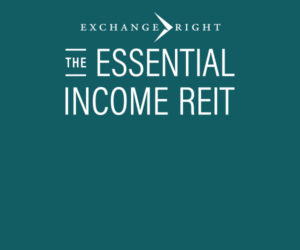David Fisher | Phoenix American
A rolling fund is a type of investment vehicle structured to allow continuous capital raising and investing. Unlike traditional closed-end funds that raise capital once and have a fixed investment period, rolling funds operate on a subscription basis with periodic capital calls. Typically, investors commit capital on a quarterly basis, and fund managers continuously deploy this capital into investment opportunities. This model provides flexibility for both investors and fund managers, making it an innovative option in private equity management.
Structure and Mechanics
• Subscription Basis: Investors commit to a rolling fund on a quarterly basis. Each subscription period creates a new fund series, allowing continuous fundraising and deployment.
• Capital Calls: Investors receive capital calls periodically (e.g., every quarter), which they fulfill to meet their committed amounts.
• Deployment of Capital: Fund managers invest the incoming capital in opportunities as they arise, maintaining a steady flow of investments.
• Management and Performance Fees: Similar to traditional funds, rolling funds charge management fees (e.g., 2% of committed capital) and performance fees (e.g., 20% of profits above a certain hurdle rate).
• Liquidity and Commitment: Investors can choose to renew their commitments for subsequent periods or opt-out, providing flexibility and liquidity compared to traditional private equity funds.
Advantages for Fund Managers
• Continuous Fundraising: Rolling funds allow managers to raise capital continuously, reducing the pressure and time constraints associated with single fundraising events.
• Steady Capital Flow: The periodic capital calls ensure a steady flow of capital, enabling fund managers to take advantage of investment opportunities as they arise.
• Flexibility: Fund managers can adjust strategies more dynamically in response to market conditions and investor demand, providing more agility than traditional closed-end funds.
• Increased Investor Base: The ability to continuously accept new commitments allows fund managers to build a larger and more diverse investor base over time.
Advantages for Investors
• Lower Initial Commitment: Investors can start with smaller commitments and gradually increase their investment over time, reducing the barrier to entry.
• Flexibility and Liquidity: Investors are not locked into long-term commitments and can choose to renew or opt-out at each subscription period, offering greater liquidity.
• Diversification: Rolling funds allow investors to diversify their investments across multiple series and time periods, potentially reducing risk.
• Access to Opportunities: Investors can gain access to ongoing investment opportunities rather than waiting for the next traditional fund to open.
Potential Disadvantages for Fund Managers
• Administrative Complexity: Managing multiple fund series and periodic capital calls can increase administrative burdens and require robust systems.
• Investor Relations: Continuous fundraising requires ongoing communication and relationship management with investors, which can be resource-intensive.
• Performance Pressure: The need to consistently deliver results to encourage re-commitments from investors may add pressure to the fund manager’s performance.
Potential Disadvantages for Investors
• Uncertainty in Performance: The performance of a rolling fund can be more variable due to the continuous nature of investments and varying market conditions.
• Complexity in Tracking: Investors need to track multiple fund series and commitments, which can be complex and require careful management.
• Potential for Lower Returns: The flexibility and liquidity of rolling funds might lead to lower returns compared to traditional long-term private equity investments, which benefit from a locked-in capital structure.
Flexibility in Fundraising
Rolling funds offer an innovative and flexible approach to private equity investment, providing benefits in continuous fundraising, steady capital deployment and greater investor flexibility. However, they also come with the challenges of increased administrative complexity and the need for continuous performance. Both fund managers and investors should weigh these factors carefully when considering rolling funds as an investment vehicle.











